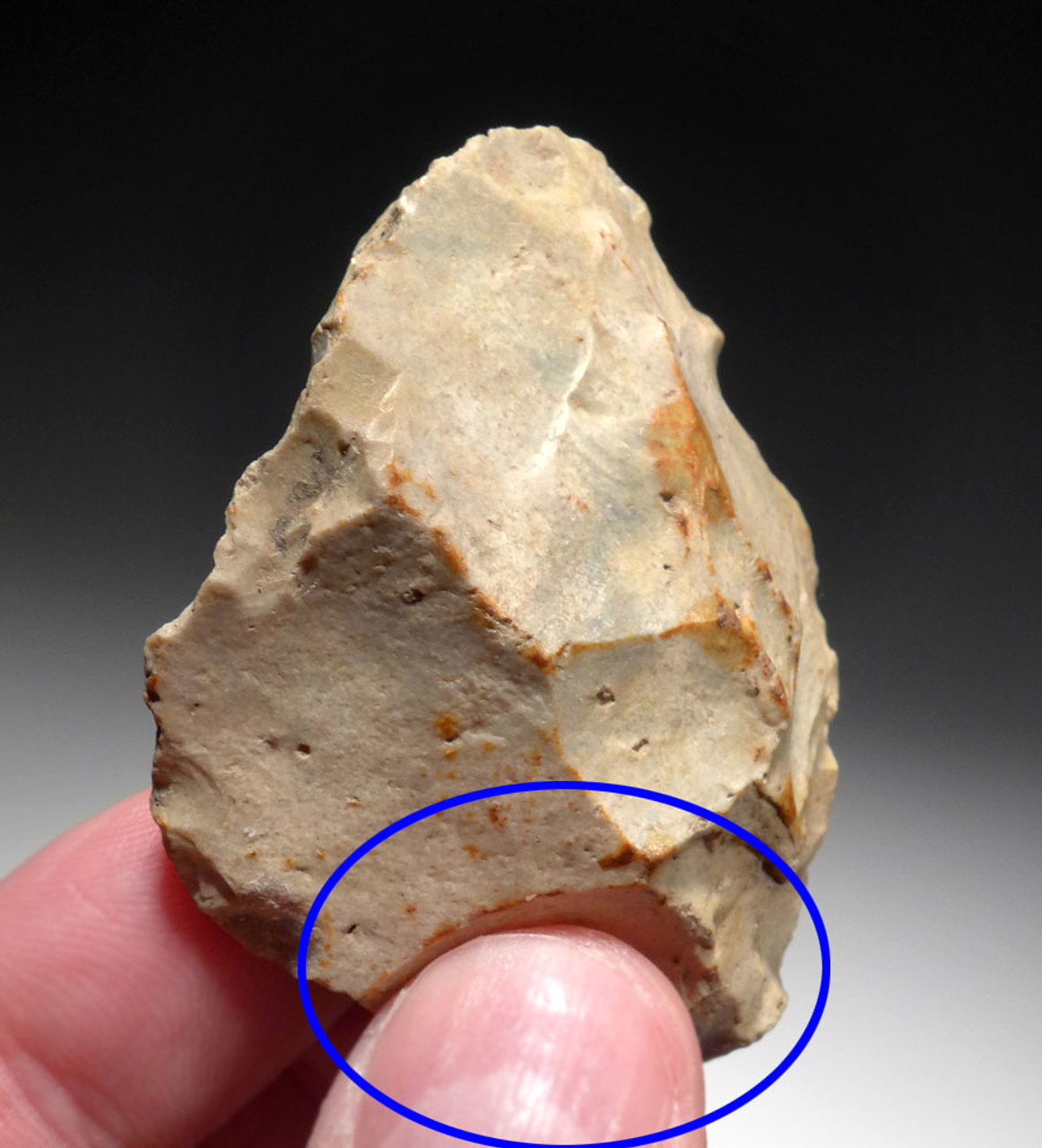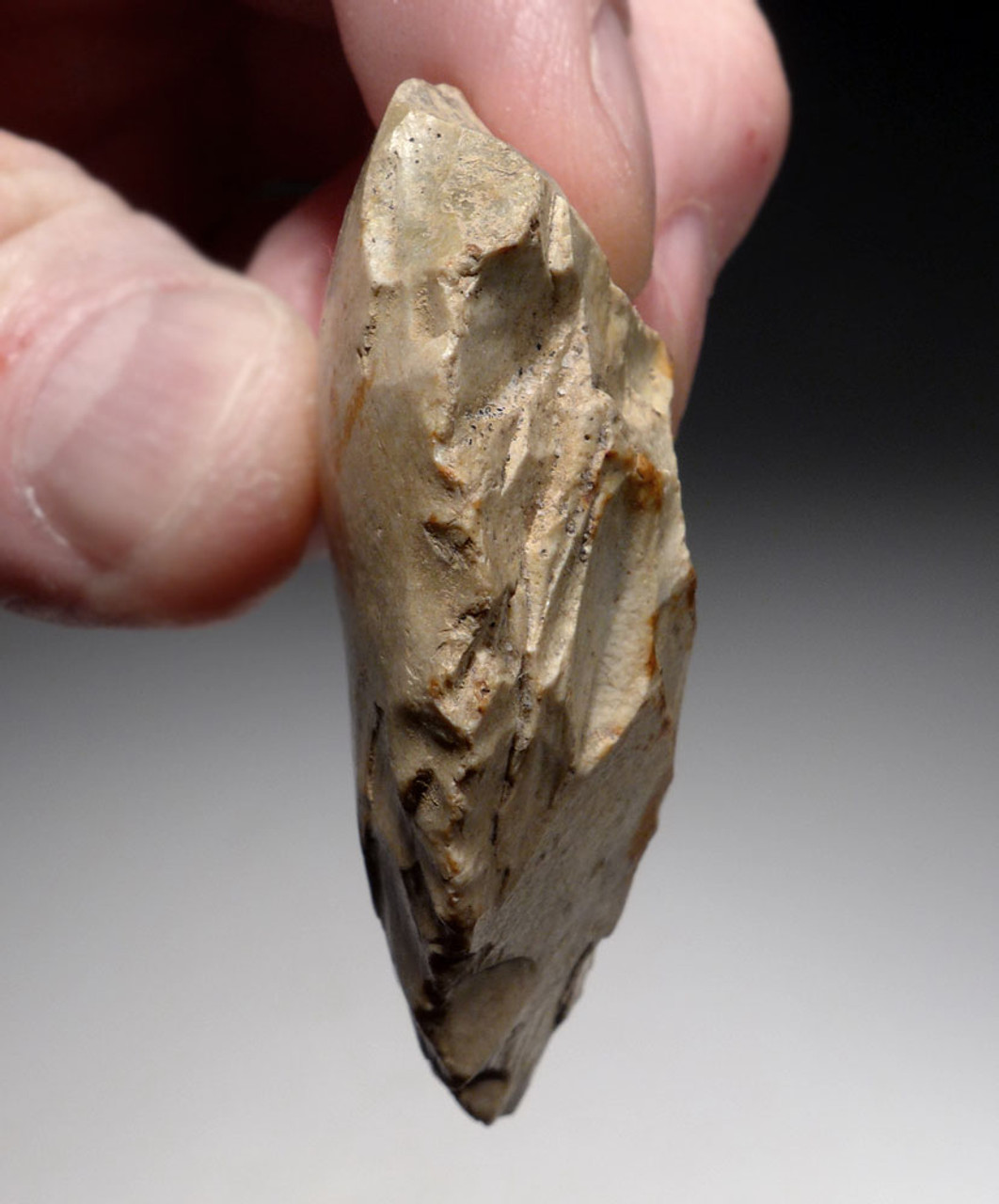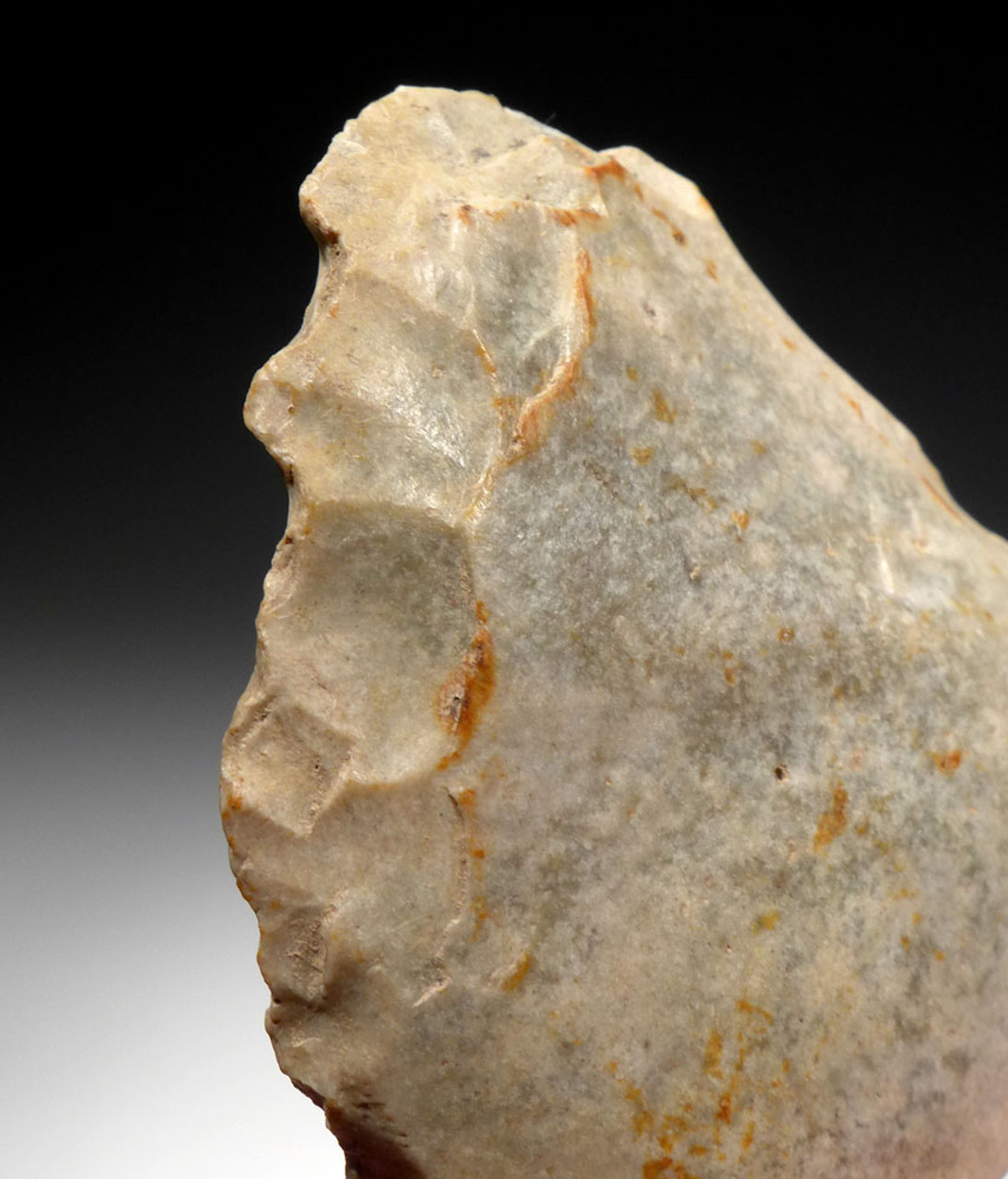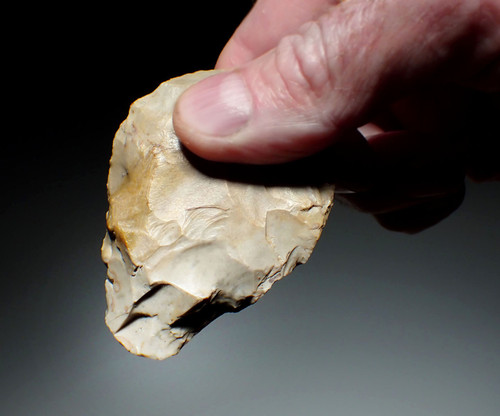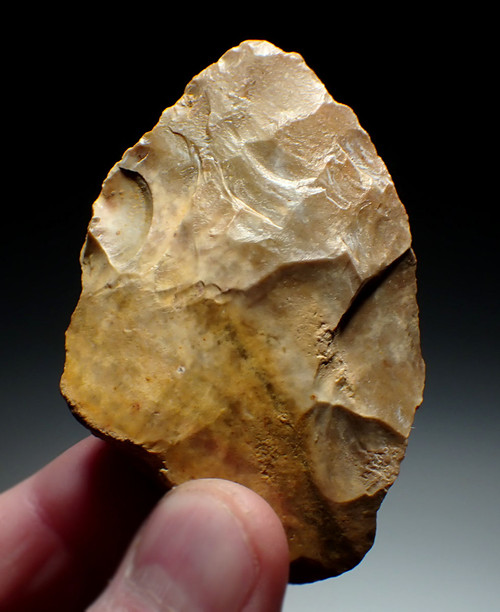Product Description
SEE MORE MOUSTERIAN NEANDERTHAL TOOLS
For comparison prices, please see the "Old World Typology and Price Guide" section of the "OVERSTREET IDENTIFICATION AND PRICE GUIDE TO INDIAN ARROWHEADS" editions 7th, 8th and 9th.
With spectacular flaking and workmanship, this Mousterian CORDIFORM biface hand axe was made by Neanderthals over 40,000 years ago out of flint and collected from a former Neanderthal occupation site of the Orne Valley in the Lower Normandy region of France. It possesses exceptional Neanderthal workmanship with expert bifacial flaking. Beautiful, naturally glossy patina from ground minerals during millennia of burial, highlights the superb prehistoric craftsmanship. The exceptional workmanship and reduced size of this Mousterian hand axe set a new milestone of human achievement in tool technology. In contrast to the larger, cruder Acheulian hand axes of earlier Homo erectus, this prehistoric prize specimen wonderfully showcases the advanced technological developments and flaking skills of the Neanderthal humans they were replaced by.
Fine quality Mousterian Neanderthal tools are rare and often move from one private collection to the next as most sites are now depleted, destroyed, built over and all are protected by law forbidding modern day digging. It is probable by simple logistics, that over time, high grade archeological tools will most definitely appreciate as collector demand continues to outpace the finite supply circulating among collectors that buy pieces and never resell. Investment aside, no Paleolithic collection should be without representative tools of one of the most famous primitive humans in history!
Unlike their much larger predecessors of the Sahara during the Acheulian, Mousterian handaxes are much smaller in comparison. Not only are Mousterian handaxes considered some of the rarest and most prized tools of the Neanderthals, this exquisite representation is a perfectly executed example. The entire surface features a naturally lustrous soil sheen and a warm gold hue to the flint. Authenticity is evidenced by the presence of minerals deep in hinge fractures and microscopic crevices.
 US DOLLAR
US DOLLAR
 EURO
EURO
 AUSTRALIAN DOLLAR
AUSTRALIAN DOLLAR
 CANADIAN DOLLAR
CANADIAN DOLLAR
 POUND STERLING
POUND STERLING



